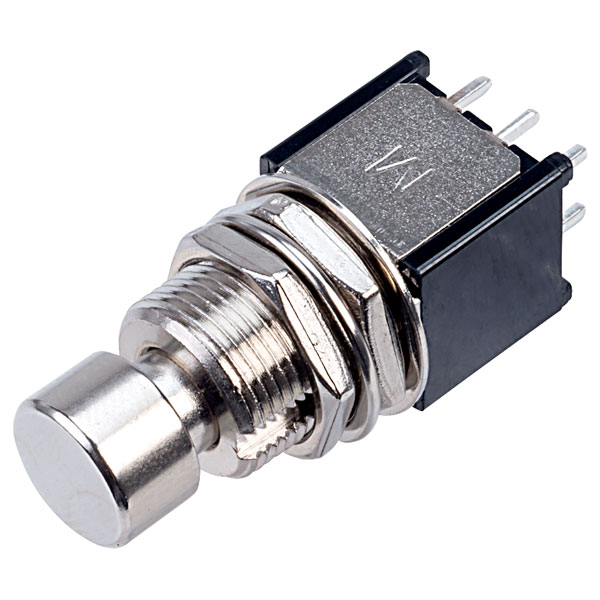Just picked up a bunch of Taiwan Alpha DPDT foot switches - got them from Rapid (UK) so ended up buying more than i might otherwise have, they never responded to me on Ebay about the same switches.
These would functionally be the kind of switches you’d find in most modern pedals, so the device takes care of ‘soft’ latching states and so on, being double throw you can set up a toggle to allow the switch to be normally closed (the boss standard) or normally open (for full flexibility)
Anyway - they looked nice on arrival, but my heart sank a bit when i noticed they clicked quite positively … i’m thinking oh no these are Latching … but they are Momentary (and marked so)
This is the heart of the question, these are supposed to be the less common low force variety intended for guitar pedal purposes
The official blurb states …
This rugged momentary foot switch has a soft touch action and electrically silent operation that makes it ideal for applications where switch noise would be intrusive, such as guitar pedal boards, PA systems, keyboard foot switches, etc.
- Low actuating force
- Doesn’t ‘clunk’ when actuated in amplified applications
- Ideal for foot pedals in music applications
- Use for equipment control leaving hands free
- DPDT contacts
- Momentary action
However, given that they had a ‘latching’ feel, i was thinking, these are not quiet, they’re louder arguably than most devices i have with outwardly these types of switches
So i’m thinking that they may have a nice positive feel which is important, but i’m concerned i might have been sent the vanilla type and there’s nothing uniquely identifying on the genuine switch save a hand stamped ‘AJ2’
I’ll be stuck waiting until Tuesday (at least) before i can try these (in case they are wrong) given the anachronistic nonsense happening in the UK this weekend
AJ2 leads to nothing online, at seller or Maker - the differentiation between the two viable options is a 027 suffix (as per these) and 011 for the vanilla ones
Anybody rocking these, have either types or have insights
They aren’t stiff, per se, but they need to be clicked through, which is not at all what i was expecting … the maker’s blurb emphasises doesn’t ‘clunk’, but they are perhaps playing with expectations, it may only be electrically ‘quiet’ … these are nothing like say the relatively silent switches on a Zoia or Analog Drive, these would probably mechanically click in say an ambient performance
Either way, i’m probably stuck with them, but. happy to take recommendations for quiet alternatives if i bail on them, but before i can see how they are in-situ i just need to know if the extra stamped AJ2 reference can identify these as the ones i ordered or the less ‘clunky’ ones
Slim hopes, but might as well ask, no joy browsing this or looking at modwiggler etc
Manufacturer Part Number : SF12011F-0202-20R-M-027
I was going to wire up a few of these dual switches up or maybe use them in a microcontroller based MIDI project with 4 or so to expand fx pedal functionality in a small footprint
if you have no response to the specific question, feel free to share any DIY footswitch pics/info or tips for switches with a good feel (has to be 10mm rad for the toppers)









